
Though there are numerous birds bearing the name robin, there’s only one original, the European Robin, Erithacus rubecula, usually known as just the Robin. Here in the UK everybody loves the Robin, but despite being our most familiar bird it retains a degree of mystery. Most Robins hatched in Britain never move far from their birthplace, but we know that a few fly south in the autumn. One unfortunate bird, ringed in Montgomeryshire in South Wales, was shot over 1600km away in Spain in its first winter. Why do some individuals feel the compulsion to migrate, with all the inherent risks long flights involve, when they are just as likely to survive if they stay at home?
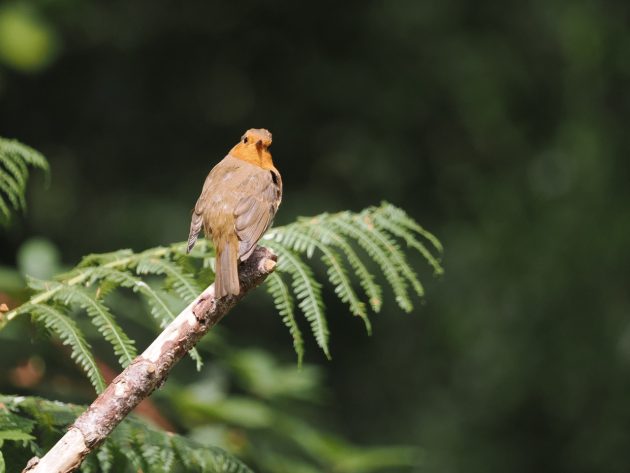
The majority of British Robins are sedentary, but in contrast their cousins that breed in Fennoscandia and eastern Europe are highly migratory. They abandon the forests in the late summer, migrating to the Mediterranean and even Morocco. Some of these birds pass through Britain, but how many remain to winter here? Nobody knows. However, records show that our Northern Isles hold more Robins in the winter than the summer, so these are presumably migrants.
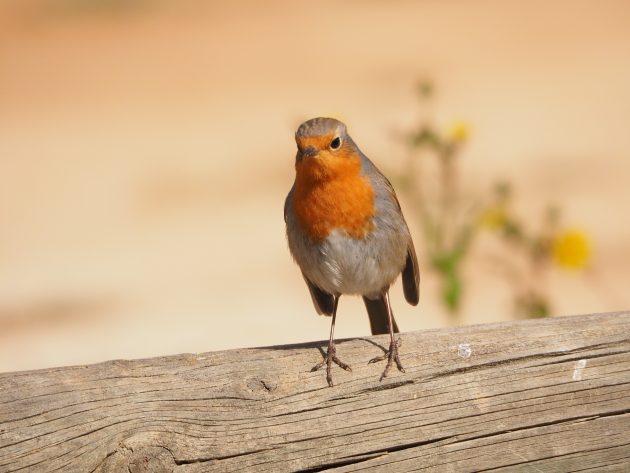
Though Scandinavian birds look almost exactly the same as ours, their behaviour is quite different. Theyare shy birds of the mixed spruce and birch forests. A friend who regularly hosts groups of Finnish bird photographers in Norfolk tells me that the Finns delight in photographing our confiding Robins, as they are so much more approachable than their birds.
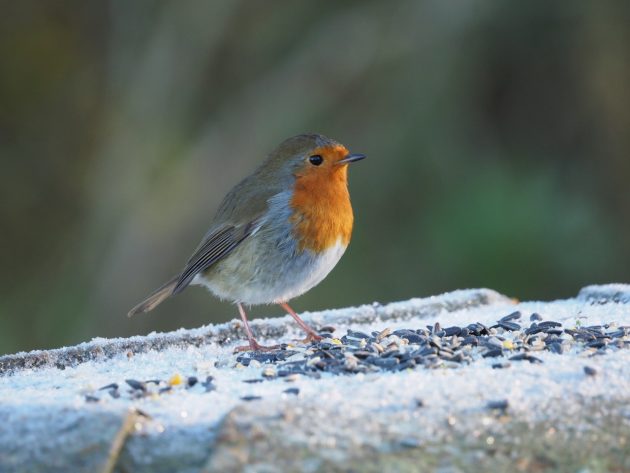
Erithacus rubecula is in a unique genus all of its own. Once thought to be a member of the thrush family, it is now regarded as being more closely related to the chats and flycatchers. Its range extends from the Azores to south-west Siberia, and includes much of Europe, though in the south of its range it is best known as a winter visitor.
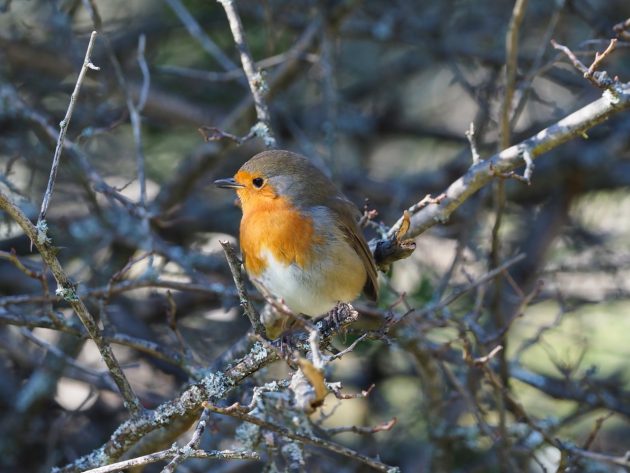
It breeds in almost every mainland country in Europe as well as on many Mediterranean and Atlantic islands (Malta and Cyprus being notable exceptions). In the Balearics it was first recorded breeding in 2005, and is progressively colonising the islands, while it also occurs locally in Iceland. Numbers have been increasing throughout Europe since 1980, and this is one species that it’s thought could profit from climate change and milder winters.
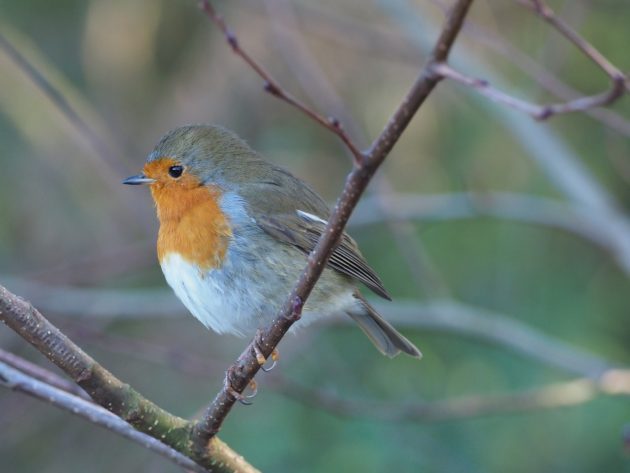
British gardeners are familiar with the friendly Robin joining them when they’re digging in the vegetable patch, often coming within a foot or two of the fork, and sometimes even perching on it. It’s easy to be anthropomorphic and think that these birds not only recognise us, but regard us a friend, but that’s not the case. They just identify the opportunity for an easy snack. In eastern Europe, Robins have been observed following wild boar rooting in the forest floor.
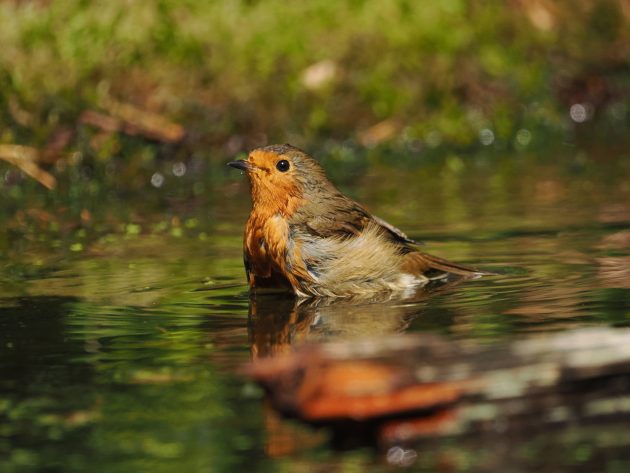
Robins follow the fork, or the boar, because their favourite foods are insects and arthropods, the sort of creepy-crawly animals that can be found when soils are disturbed. They will readily eat anything from earthworms to spiders, caterpillars to beetles. I remember once on a chilly December day catching a large spider in my living room and throwing it out into the garden. It was pounced on almost instantly by the resident Robin. I had inadvertently thrown him the Robin’s equivalent of a T-bone steak.
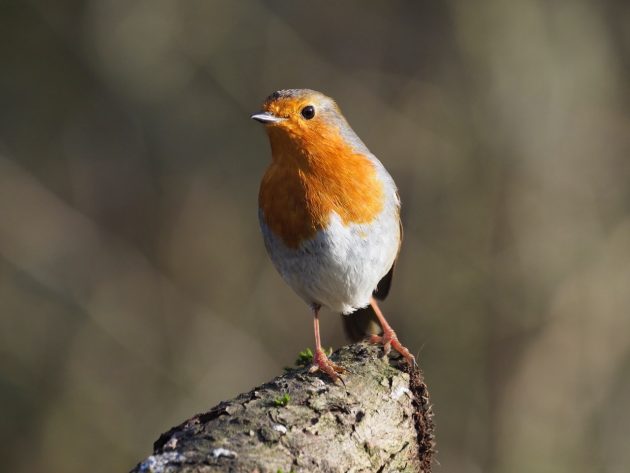
Like most successful birds, Robins are adaptable when it comes to food. They will readily raid the bird table, and those in my garden are keen on husk-free sunflowers that they take from the bird feeders. Individual Robins have been seen taking crustaceans from a saltwater creek, and diving into a stream to catch tadpoles. However, the way to a Robin’s heart, or at least to make it finger tame, is to provide it with mealworms.
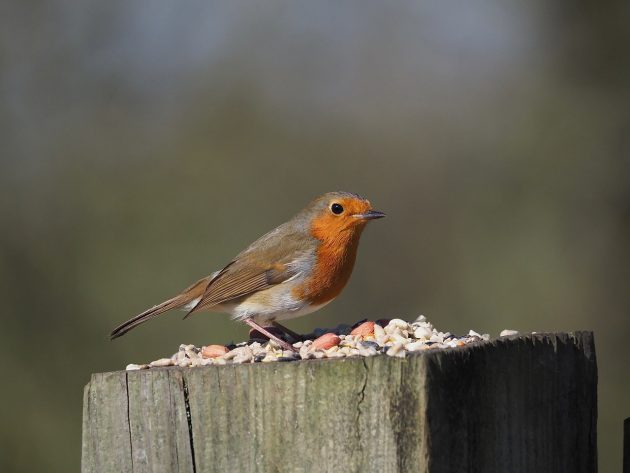
Robins are anti-social, preferring their own company for much of the year. As a result they are exceedingly territorial. Their so-called winter song, usually described as being somewhat sad or melancholy, can be heard from July onwards, uttered by the juveniles when they have finished their moult and acquired their first red breasts, with the adults starting to sing a little later when they have completed their moult. Unusually, both male and female sing to establish and maintain their territory, from which they will do their best to exclude any rivals. Suitable song posts are essential, as they are needed to advertise the territorial boundaries.
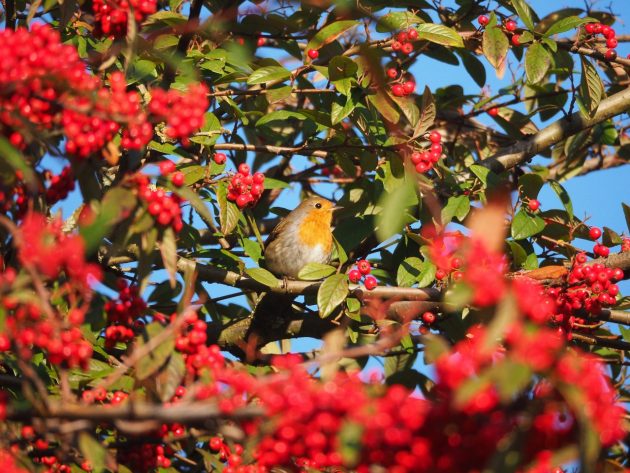
David Lack, whose book The life of the Robin, first published in 1943, remains a classic study of the species, put a great deal of effort into discovering Robin territories. He found that they range in size during the breeding season from two fifths of an acre to two acres. Pairs sometimes hold larger territories of up to three acres, but they find these impossible to defend for any length of time. Defending a territory is vitally important to a Robin, and trespassers will be attacked. The ensuing battle may well lead to the death of one of the birds, though no-one is quite sure how often the intruder triumphs over the territory holder. However, death at the beak of a rival plays a significant role in robin mortality, and it has been estimated that it may account for over 10% of mortality in some populations.
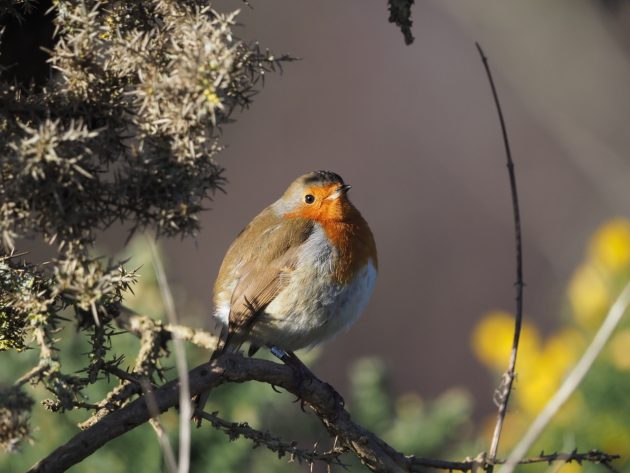
Robins, incidentally, are remarkably short-lived, with the average length of life a mere 13 months. However, this reflects the high mortality of juveniles, so a mature experienced individual may well live to four or five, with the current record held by a Czech bird, found freshly dead at the impressive age of 19 years and four months.
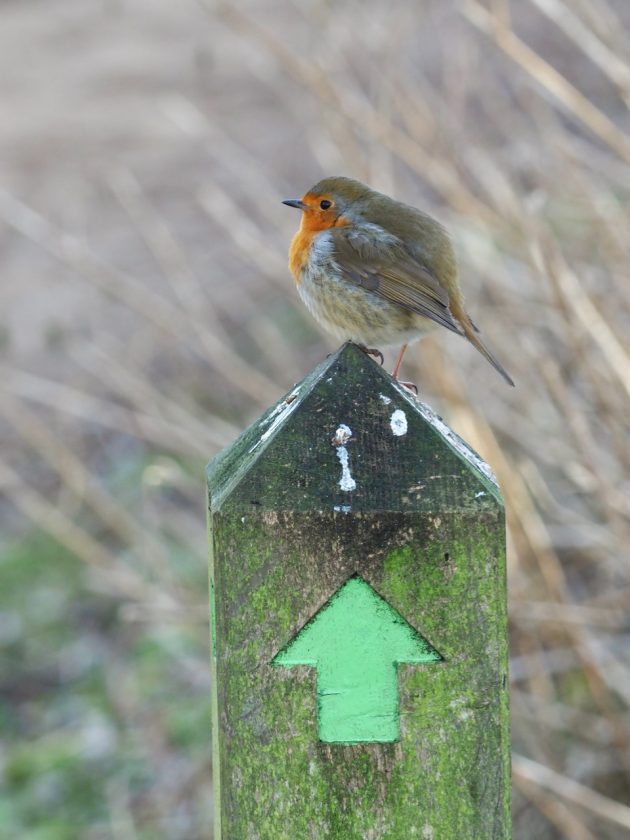
As Robins’ lives are short, it’s essential for them to breed prolifically to maintain their numbers. They are early nesters, with birds in southern England starting nest building in March. The usual clutch is from four to six eggs, and incubation starts as soon as the last egg is laid. Hatching takes place after 14 days, and it’s another 14 days before the chicks fledge. Independence is finally gained three weeks later. During this time they are feed exclusively by the cock, for the female will be busy with her second clutch. By the time the eggs hatch, the cock is ready to help with feeding, for the first brood no longer depends on him.
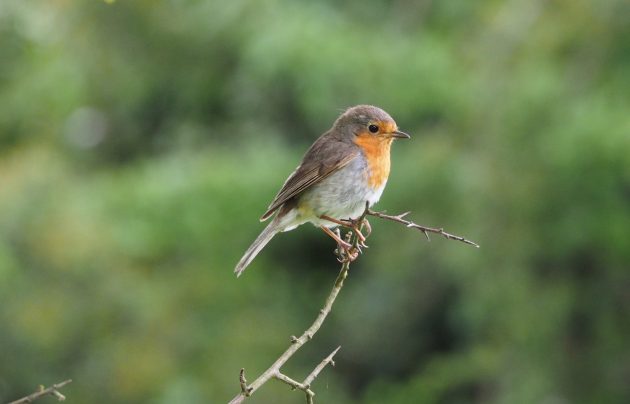
Instantly recognisable as Robins by their shape, young birds are finely spotted and lack the red bib. They acquire this after their first moult, so by mid-summer most look almost identical to their parents. The plumage of both sexes is the same, and it’s only by behaviour that we can tell them apart, though of course the robins themselves don’t have any problems.
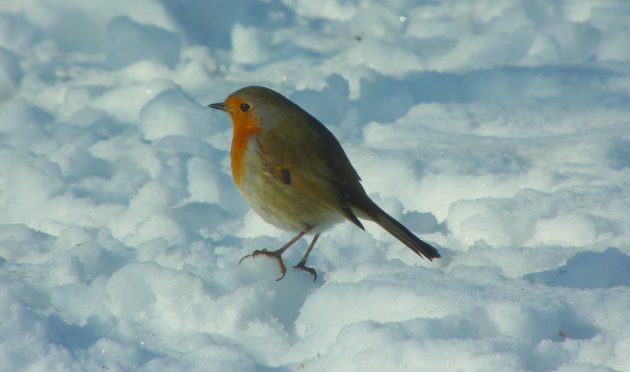
The survival of the chicks may be poor – kills by cats are the major recovery cause for British-ringed Robins – but the numbers that survive are more than sufficient for the population to be maintained, and the good news is that this is one native bird that continues to flourish. The BTO’s Bird Atlas 2007-11 showed that Robins breed in 94% of all 10km squares in the British Isles, and there’s no indication of any change in their status since. Thankfully, our national bird is here to stay.
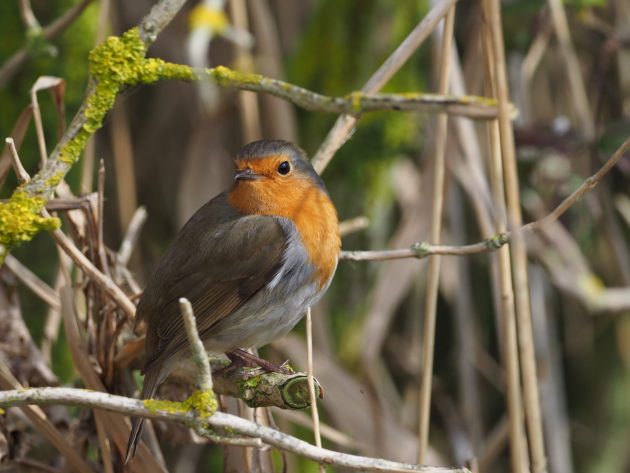






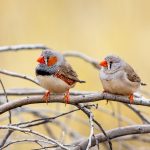


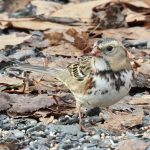
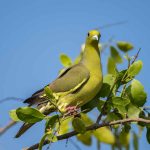


I don’t mind the Robin thinks I am a boar as long as I can watch them up close. Delightful creatures and so well described by David. A great start of my weekend. I may go out and look for Robins, I think.
I kept thinking of the book THE SECRET GARDEN, and the robin who would land on the shovel handle. I wish the robins here in Denver were as friendly!
This is such a cute little bird. It was one of the first birds I saw when I visited Turkey several years ago. Also one of the most easily recognizable of the birds I saw while there. Thank you for highlighting it.
I am very fond of the American Robin (Turdus migratorius) that we have here in the US. The Am. Robin does seem to me to be quite confiding. For, this reason, on a recent trip to Finland and Norway, I was particularly attracted to the very common Fieldfare (Turdus pilaris). There were so many similarities. One exception is that the Fieldfare was much less confiding. However, it is absolutely correct that neither of these birds are robins; they are thrushes. In Finland I saw only one European Robin and that was disappointing. This is a great short monologue of such a singular bird. Despite its diminutive appearance, it is one tough little bird. The photos are great. For me, the European Robin wins an award for cuteness.